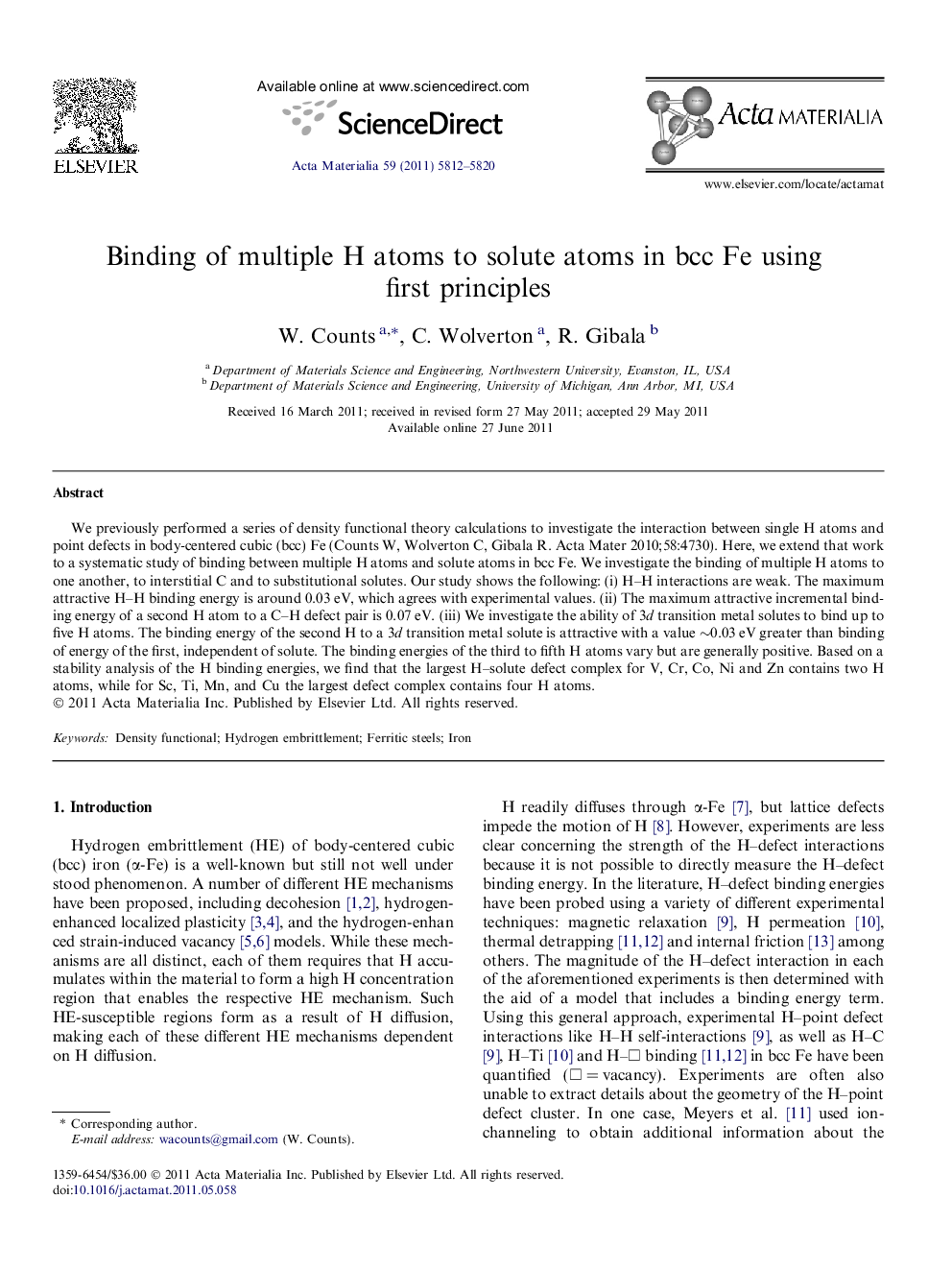| Article ID | Journal | Published Year | Pages | File Type |
|---|---|---|---|---|
| 1447324 | Acta Materialia | 2011 | 9 Pages |
We previously performed a series of density functional theory calculations to investigate the interaction between single H atoms and point defects in body-centered cubic (bcc) Fe (Counts W, Wolverton C, Gibala R. Acta Mater 2010;58:4730). Here, we extend that work to a systematic study of binding between multiple H atoms and solute atoms in bcc Fe. We investigate the binding of multiple H atoms to one another, to interstitial C and to substitutional solutes. Our study shows the following: (i) H–H interactions are weak. The maximum attractive H–H binding energy is around 0.03 eV, which agrees with experimental values. (ii) The maximum attractive incremental binding energy of a second H atom to a C–H defect pair is 0.07 eV. (iii) We investigate the ability of 3d transition metal solutes to bind up to five H atoms. The binding energy of the second H to a 3d transition metal solute is attractive with a value ∼0.03 eV greater than binding of energy of the first, independent of solute. The binding energies of the third to fifth H atoms vary but are generally positive. Based on a stability analysis of the H binding energies, we find that the largest H–solute defect complex for V, Cr, Co, Ni and Zn contains two H atoms, while for Sc, Ti, Mn, and Cu the largest defect complex contains four H atoms.
